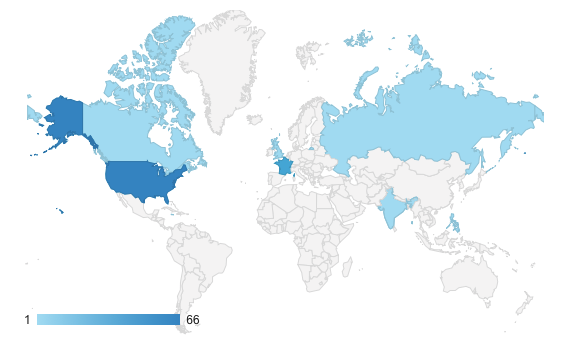2 Years of Blogging
June 24, 2016…..the day I posted my first blog. Two years and many topics later, I am still finding information to share about pets, practice, and life. I probably need to figure out what my audience looks like? The demographics of who reads my blogs? What topics get the most likes or views? In this day in age, everything is analyzed for gaining the edge on your competition. Isn’t that why we invest time and energy into social media? I have attended multiple continuing education sessions on the importance and benefit of social media. Writing a blog gives you additional merit and leverage with Google to help keep your position when people are searching for veterinarians in Winterset or Central Iowa. It is amazing to me how many people are finding us from our website. Gone are the yellow pages and local phone books. Now one just asks Siri or Alexa for veterinarians in the Winterset area and she gives Winterset Veterinary Center as her first option and indicates they have a 5 star rating if you ask her what is good about them. We have had some great reviews since starting our website in 2009. We went through an update a little over 2 years ago and I suppose it is time to review the information and see if we need to make any changes. We need to make certain the information is accurate and easy to understand for any potential client that may be searching the web for veterinarians.
Google Analytics is a program that all websites within google can access to evaluate your usage. The data is extremely interesting and helpful to see what areas are of most interest to those that visit wintersetvet.com.
In the last 2 years since we updated our website:
- 88% are new visitors and 12% are return visitors
- 2,235 users viewed 1.6 pages/session and averaged 1 minute and 12 seconds/session
- 33.5% are age 25-34 and 27.5% are between 18-24
- 45.85% are female and 54.15% are male
- 52% use desktops, 43% mobile, and 5% tablets
- 69% either use chrome or safari for their browser
- 51% organically search verses 34% typing in wintersetvet.com and 8% and 7% respectively come from social media (Facebook) or referral from other sites(Winterset Chamber).
The most interesting data piece to me is a map of where our users live. It shows that 89% are US users but that other 11% varies across the world. The following map shows the locations around the world that have either accidentally or intentionally been directed to our website. France has had some repeat visits so we are wondering who may be following our updates or blogs there.
A funny story that occurred a few months back while I was on call one Friday evening. A man informed me he would be bringing his dog in on Saturday morning to have me remove porcupine quills from his dogs face. I requested we do the removal that night since Saturday’s schedule was already booked and sedation would be required. He insisted that we do it on Saturday morning. I politely told him that I was sorry but he would need to go to the 24/7 emergency facility on Saturday. He said some rather unkind words and hung up the phone. The next morning he never called and I got to thinking how we do not have porcupines in Iowa. I had removed quills from dogs in Minnesota numerous times when I practiced up in St. Cloud. I googled Winterset Veterinary and up popped a practice in Ebensburg, Pennsylvania. Now they probably have porcupines. I decided to call the number back on my phone from the night before and share with him the ironic confusion that occurred. He did not answer so I left him a nice sweet message informing him of the organic search mistake that had occurred when he googled Winterset Vet. About 30 minutes later he called me back and we laughed as he told me I was the only Veterinarian that answered my phone the night before and returned a call to him. Since he was a truck driver he mentioned he may stop by someday while traveling across the country. Those types of mistakes would never have occurred when using telephone books. With our current google ranking, even in Ebensburg, Pennsylvania we are the first veterinarian that pops up when typing in Winterset Vet.
So whether you are local or around the world following our updates we thank you for stopping by. We will continue to strive to find ways to educate or entertain you with information pertinent to your pets and their health. We hope that you will consider subscribing to our blog by following this link:
Subscribe to our email list for news and info!
The blog will then be sent to your email each time it is posted. We never want you to miss a blog just in case the information is exactly what you needed to hear. Have a wonderful July 4th and enjoy the long summer days.


